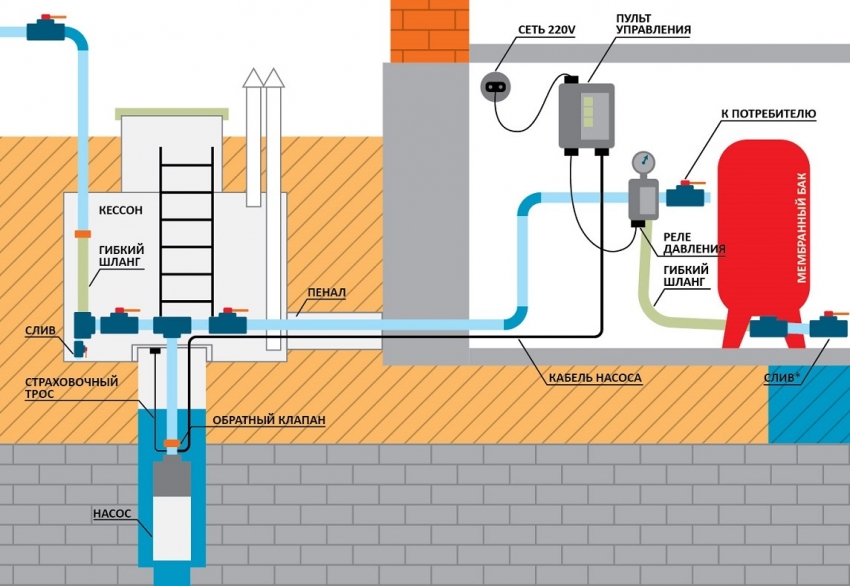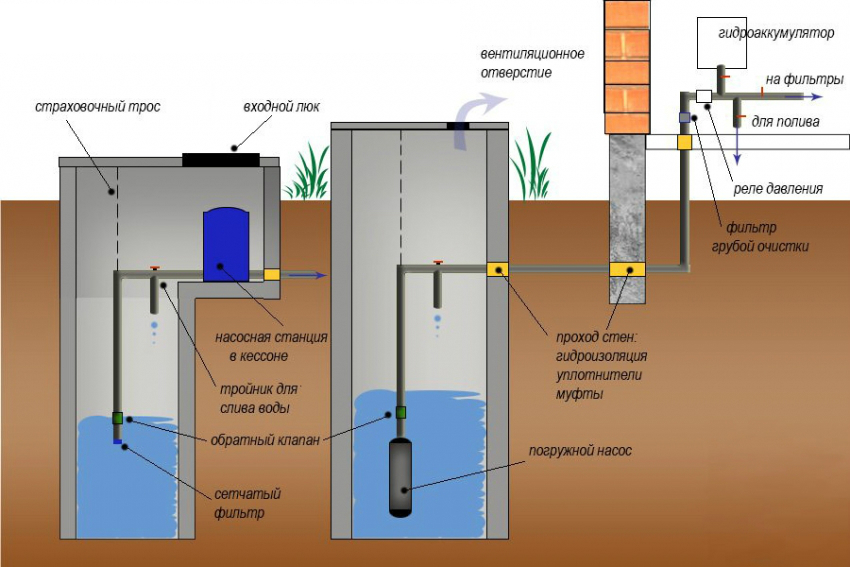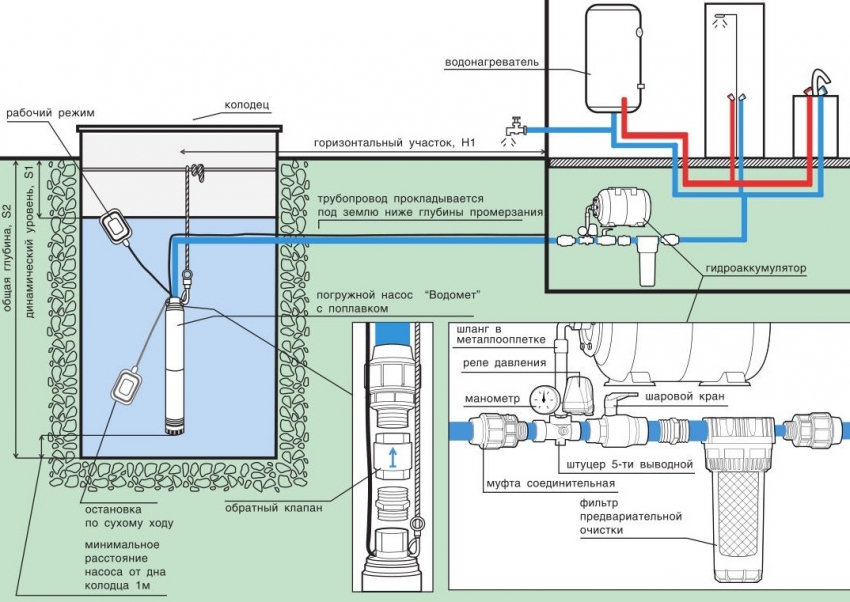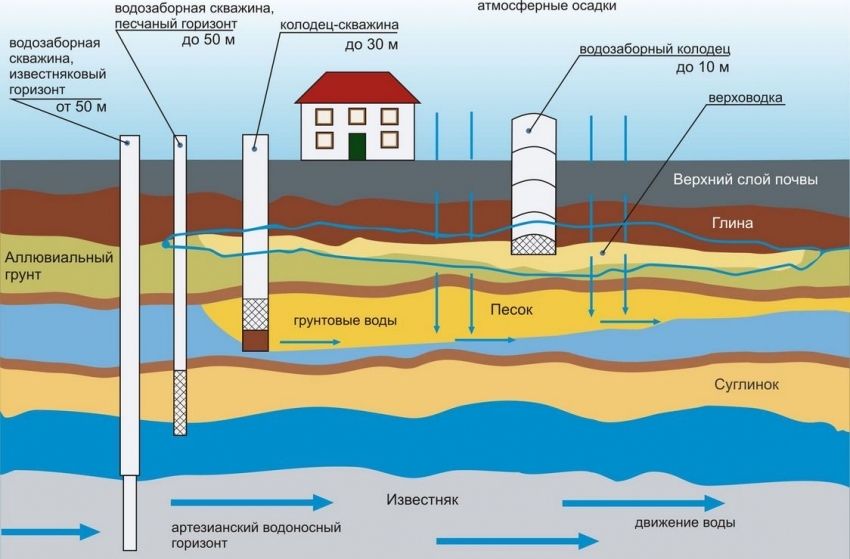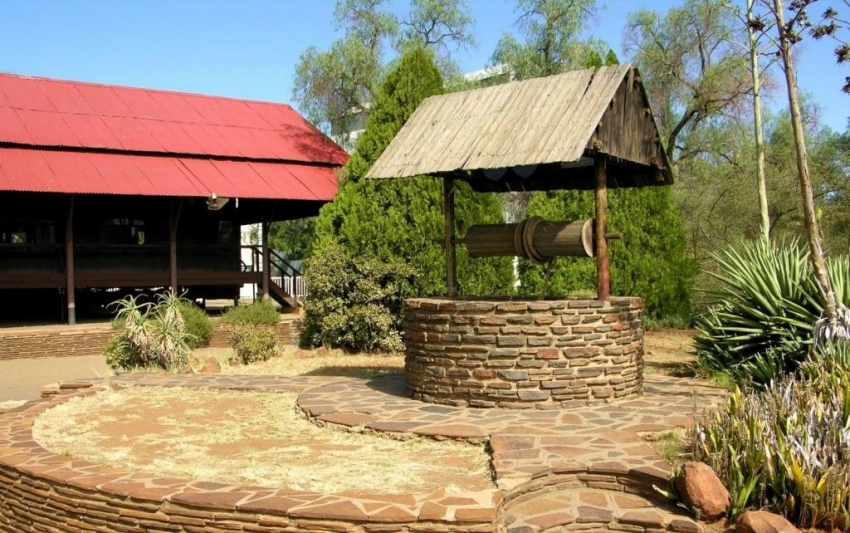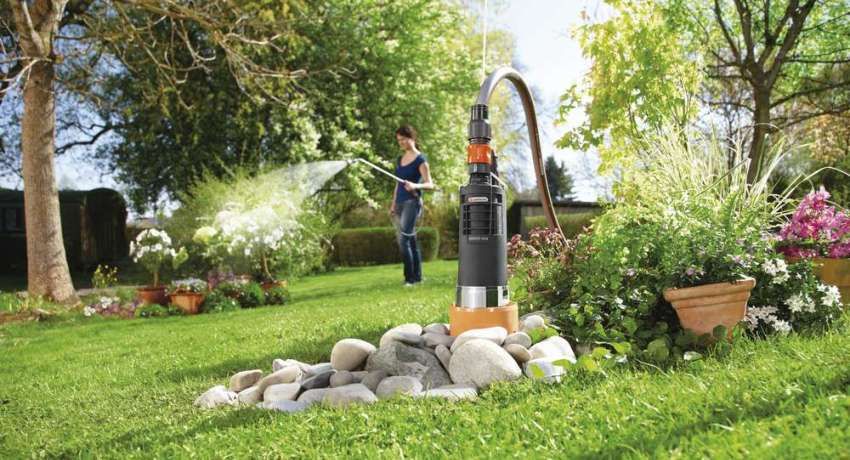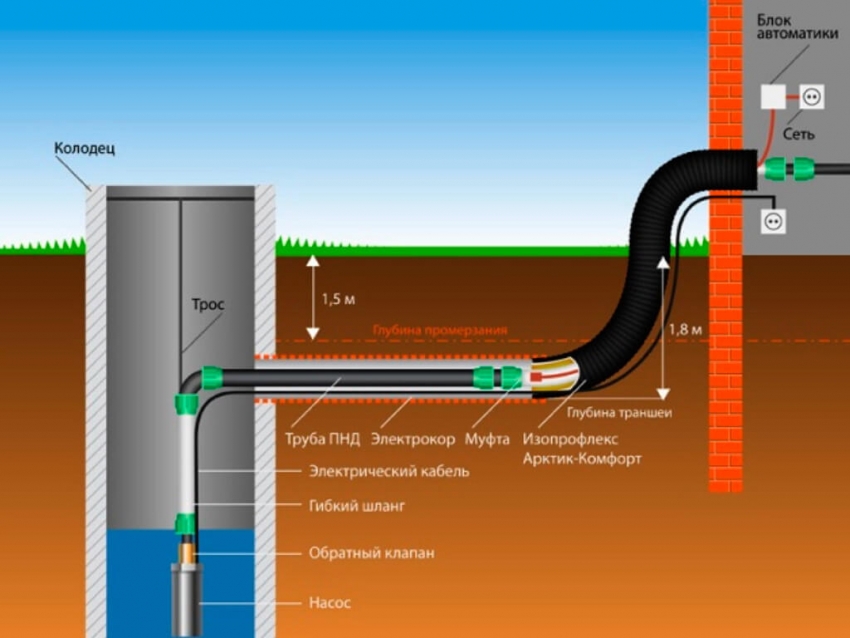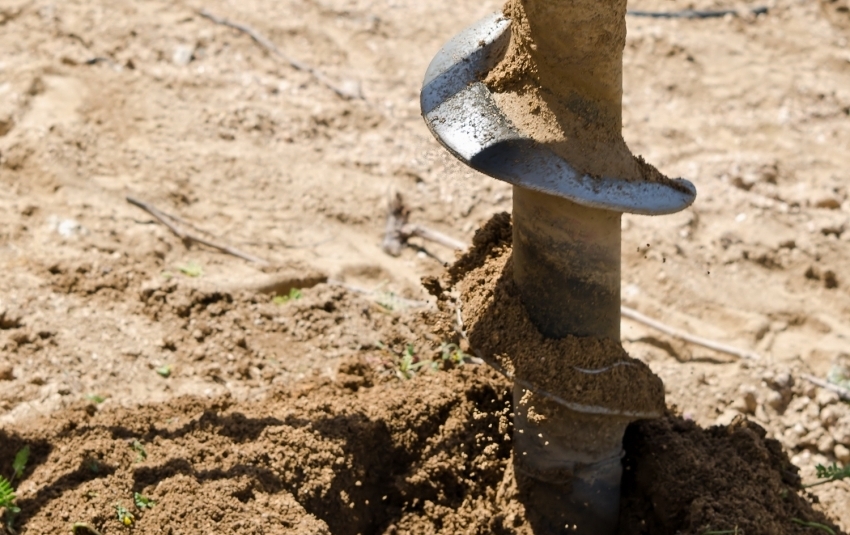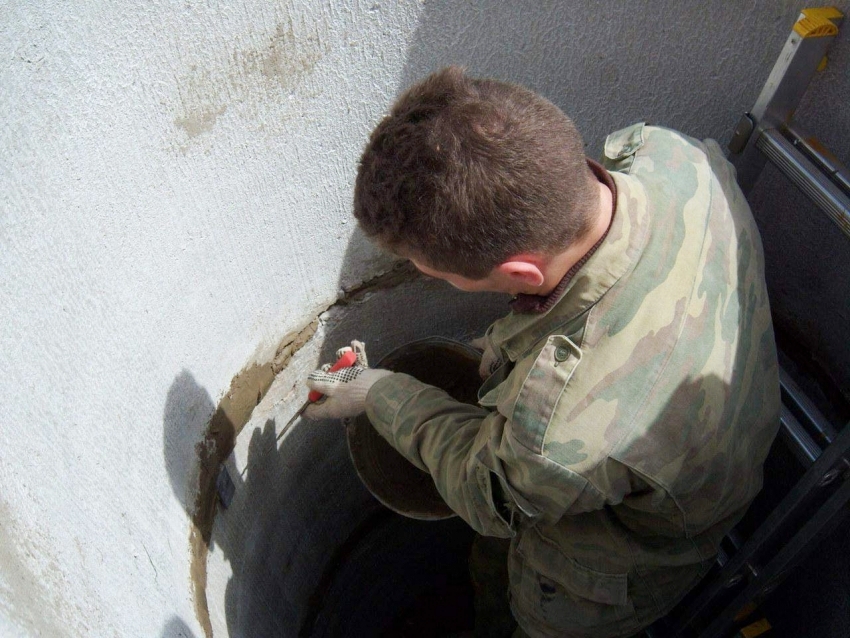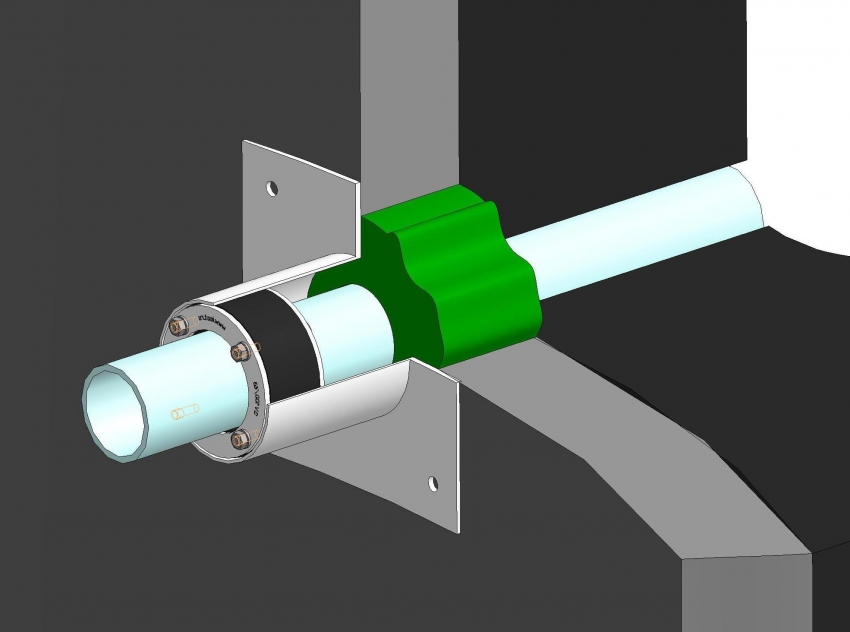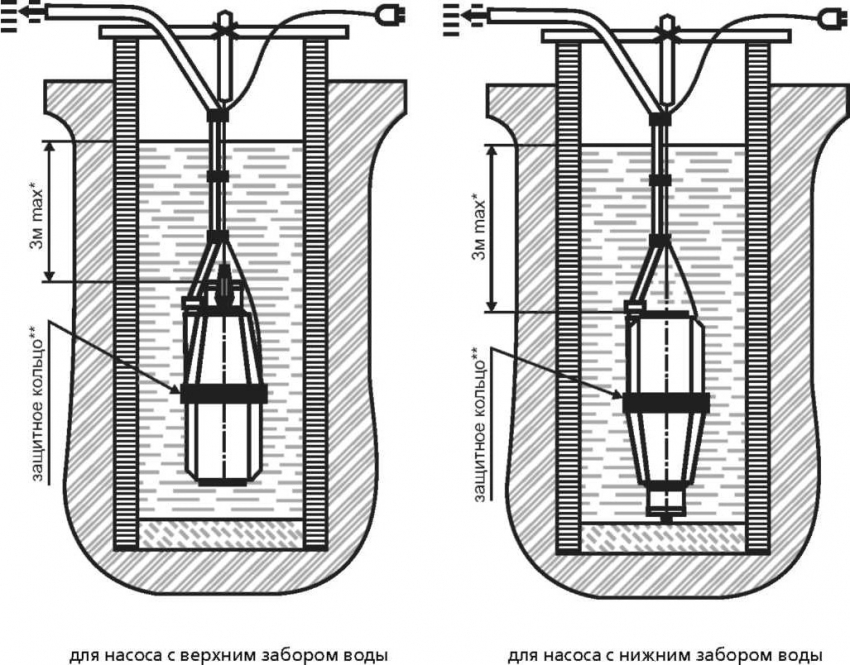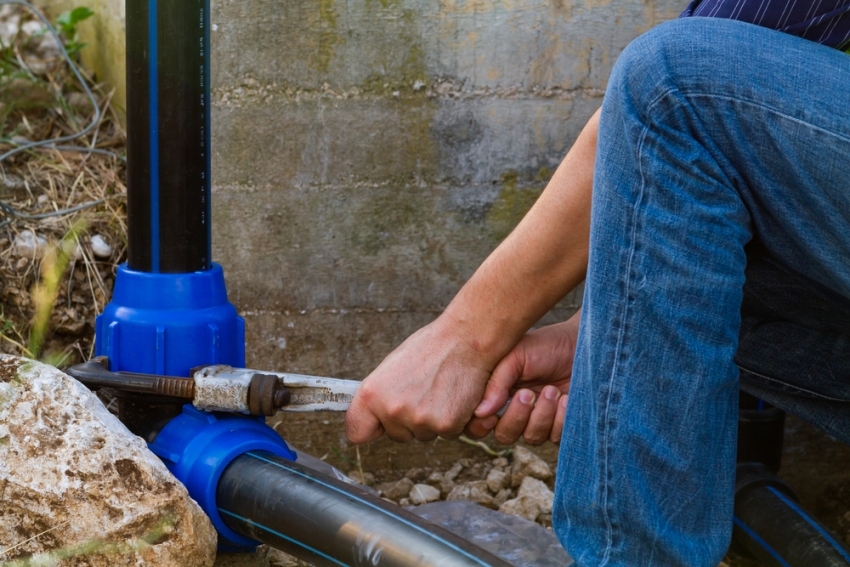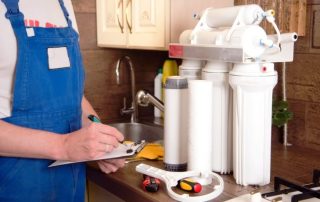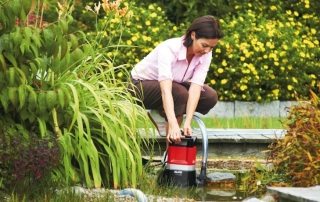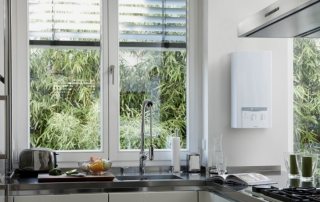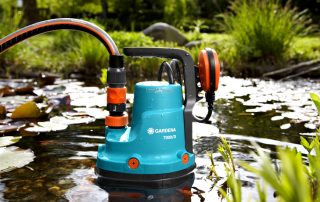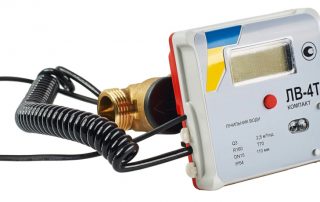The article discusses a scheme according to which you can organize the water supply of a private house from a well with your own hands. The text contains a step-by-step analysis of the technology with recommendations, starting with basic information on arranging the system, ending with practical advice that helps to lay communications in a suburban area and connect the necessary equipment.
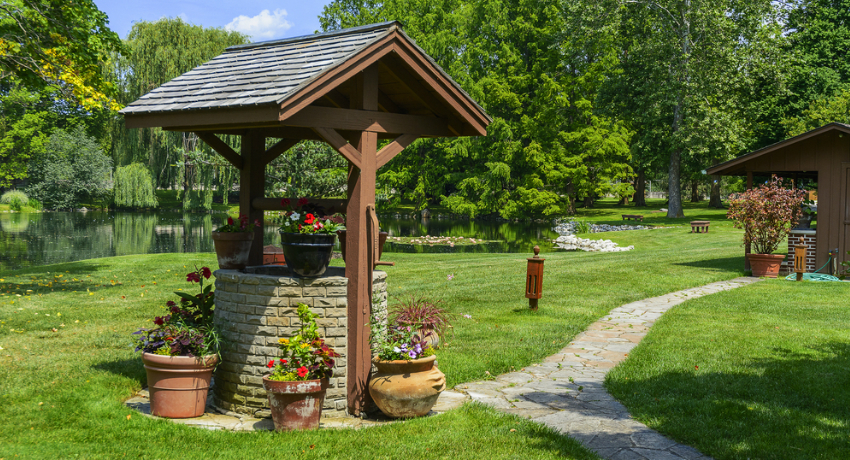
Conducting an autonomous water supply system from a well is one of the most popular and budgetary solutions for a private country house
Content
- 1 Water supply of a private house from a well: basic data
- 1.1 Advantages of water supply systems for a private house from a well and a well
- 1.2 Overview of a typical water supply scheme for a private house
- 1.3 How to bring water from a well to a house: system requirements
- 1.4 The choice of equipment for water supply of a private house
- 1.5 Organization of water supply and sewerage in the country: turnkey price
- 2 How to organize a water supply system from a well to a house with your own hands
- 2.1 How to bring water into the house: choosing the best place for a well
- 2.2 The initial stage of organizing water supply to a private house from a well with your own hands
- 2.3 Features of the well installation system on the site
- 2.4 Installation of equipment for water supply to a summer cottage from a well
- 2.5 Laying a line for organizing water supply in a country house from a well
Water supply of a private house from a well: basic data
Most of the owners of private houses strive to maintain the usual living conditions in suburban areas. If the building is located away from the main communication highways, this is not easy to achieve. For a summer cottage that people use seasonally, you can draw water from a well using buckets. If the family lives in the house permanently, you should think about organizing an autonomous water supply from a well. In some cases, this is the only way to ensure that the house has a constant water supply and good pressure in the pipes.
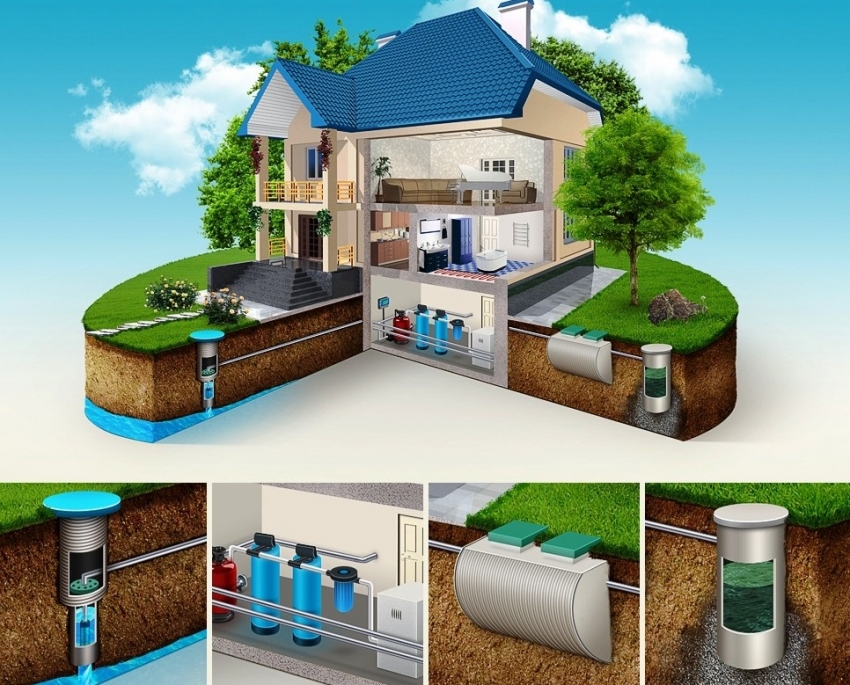
Installation of sewerage and water supply systems requires careful calculations and permits from utilities
Advantages of water supply systems for a private house from a well and a well
A private house can be supplied with water from a closed wells or an open well. The choice of system depends on the geological features of the site. Although in most cases the owner himself decides how to conduct water into the house: from a well or a well. Some regions are located on the territories of basalt plateaus. Local waters flowing to a level of 7 m are considered spring waters, and the upper reserves consist of liquid flowing down from the ground surface. In a similar situation well will be the only solution to the problem.
Wells advantages:
- long service life of the system;
- the water entering the house has no biological impurities and upper waters, although it may partially contain salts of heavy metals;
- there is no need for constant maintenance and cleaning.
Useful advice!When a hydraulic layer is buried at a depth of 5 to 11 m, experts recommend using a shallow well.
Wells advantages:
- relatively low construction costs;
- convenient service system;
- the ability to visually monitor the state of the system;
- autonomy.
If there is no electricity in the house, the liquid from the well is supplied manually using a conventional pump.
Overview of a typical water supply scheme for a private house
Professionals consider the plumbing scheme in a private house, where fluid is taken from a well, as one of the options for a well system, only deeper. The choice of equipment in this case depends on the level of placement of the water table in the soil. If the supply line has a height of up to 10 m, you can limit yourself to purchasing a suction pump with an upper installation type. For deeper wells, a submersible pump is required, the operation of which is based on a centrifugal principle of action.
The internal autonomous system does not depend on how the liquid is drawn and supplied. An obligatory element of the scheme is a storage device that provides a constant supply of water in a certain volume. Alternatively, a hydraulic accumulator can be used. Its work is aimed at maintaining pressure at a given level. The routing of pipes between the tank and the points of consumption is carried out taking into account generally accepted rules for all communication systems.
A pipe or hose is buried in the well, complete with a filter consisting of a check valve and a mesh cylinder. The upper end connects to the suction flange of the pump. The lower part of the hose should be at a height of 80-100 cm from the bottom surface. After sampling, water is supplied to a hydraulic accumulator or storage tank.
According to the typical scheme of the water supply system of a private house from a well, a submersible pump is placed inside a water source in a suspended state on a cord. The optimum height of the unit above the bottom surface is 0.8 m. A steel or polymer rope can be used to suspend the submersible pump.
Note!When polypropylene or nylon cords get wet, their elasticity increases. The result is an increase in length by 2-4%. This means that a 40 m wet rope will have a length of 40.8-41.6 m.
How to bring water from a well to a house: system requirements
If the site already has well, it does not hurt to check it and prepare it for use. To do this, you need to inspect the condition of the bottom and walls, as well as clean the structure and disinfect. Before bringing water into the house from a well, it is advisable to check it for compliance with sanitary standards. For this, a sample of the liquid is submitted to the laboratory for analysis.
Water preparation is as follows:
- clarification of liquid;
- removal of mechanical impurities;
- demineralization process;
- disinfection;
- correction of indicators (adjustment of the level of alkalinity, acidity, etc.).
For the system to work correctly, an optimally calculated water intake depth and a performance corresponding to this indicator are required, which is calculated on the basis of the volume of liquid entering well for a certain unit of time. The classic design option is able to provide water to a building with 2-4 intake points.
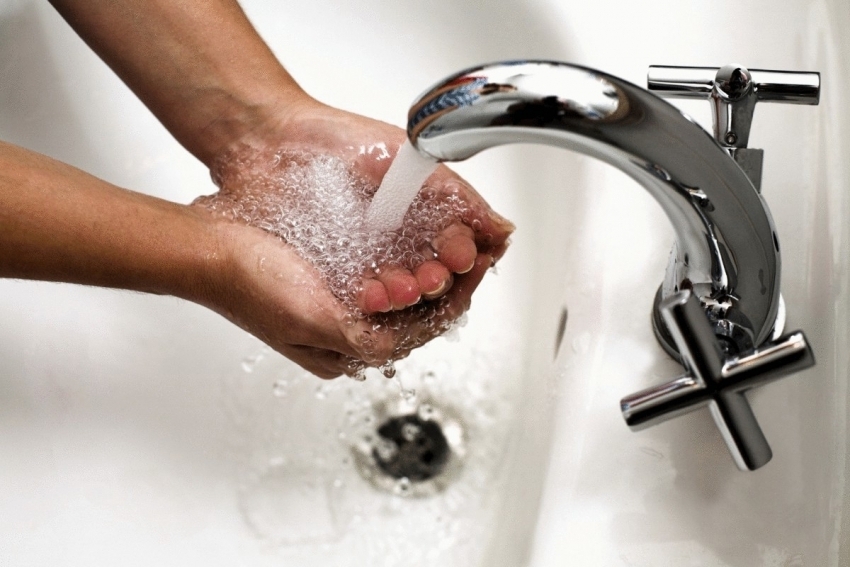
Before deciding on the arrangement of an autonomous water supply system in a private house, it is necessary to analyze the groundwater
You should also check the structure of the well for leaks. The material from which the walls are made must be resistant to shattering. The presence of brick chips or loose concrete in the liquid can lead to breakdown of the pump for the water supply of a private house. Insulating materials intended for sealing joints should not affect the smell and taste of the water. The use of membranes and bituminous mastics is not allowed. For these purposes, cement mixtures with polymer additives or fiberglass are best suited.
The well must be equipped with a bottom filter. If the structure is old and does not have a filter layer, it can be formed additionally. A layer of quartz sand and pebbles with a thickness of 0.15-0.2 m each is poured. In this case, the sand should be at the bottom.
The presence of a filtering layer solves two problems at once:
- Prevents silting up of the mine.
- Protects water from pollution.
A well with a pipe or pump is insulated for the winter. To prevent a drop in temperature, the above-ground part of the structure is insulated. The minimum allowable is not less than +2 - 4ºС.
Note! The shorter the distance between the house and the primary water intake point, the more economical the construction will be, because the cost of materials will be minimal. The proximity of the well to the building also affects the operation of the pump, which does not need to work at maximum power.
The choice of equipment for water supply of a private house
For the installation of the outdoor system, pipes made of PVC, polyethylene or plastic are used. The section size is selected taking into account the diameter of the outlet on the pump (approximately 20-32 mm). To connect different sections of pipes, hot welding technology or special elements - fittings can be used.
To find out the footage of pipes necessary for building a water supply system from a well with your own hands in a private house, you need to calculate the distance from the well to the point of entry of the system into the building and develop a scheme for laying them. You will also need to buy a squeegee. This element is a short tube with edge connections that is mounted in the wall of the well at the inlet. The insertion point must be sealed.
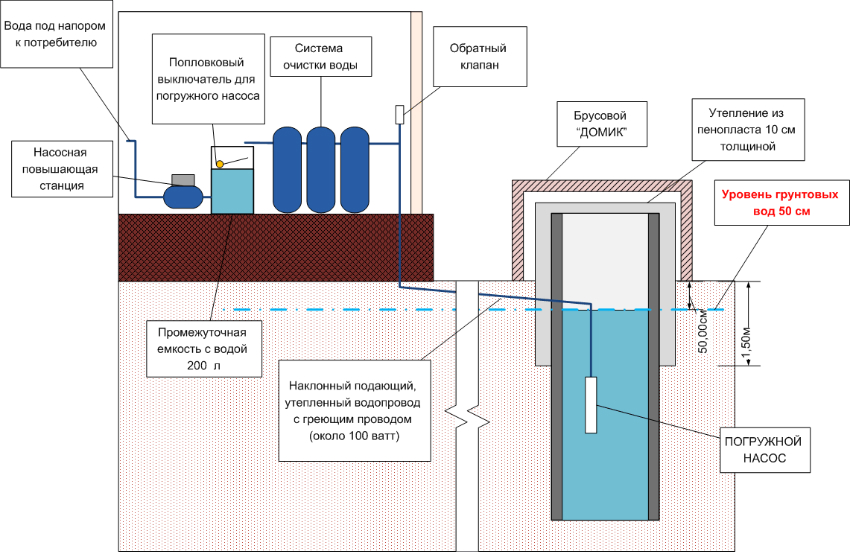
Diagram of a water supply device for a private house using an anti-freeze well, a submersible pump for raising water and a pumping station
For sealing you will need:
- clutch;
- sealant;
- insulating cement compound.
A pump is used as working equipment. He is the most important element of the system.
The choice of a pump for a well for water supply at home depends on the following points:
- source state;
- equipment characteristics;
- the required level of power and performance.
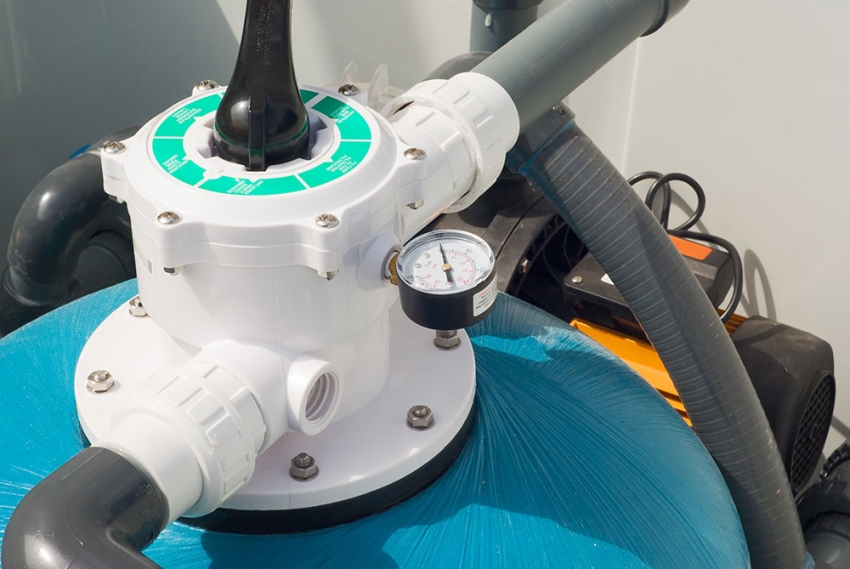
The choice of equipment for an autonomous water supply system depends primarily on the future load and the amount of water consumed
The main advantage of submersible pumps is noiselessness. Such devices have reliable factory protection built into the case. In versions with an average price, an internal press control is provided. They also have an automated dry-running protection mechanism. Pumping equipment needs precise installation and compliance with all operating rules. Only under these conditions will the device be able to work effectively over a long period.
Related article:
Pumping station for a private house: water supply of a suburban area
Selection of equipment, overview of characteristics and features of the installation. The advantages and disadvantages of the systems. Rating of the best manufacturers.
The pump is completely submerged in water. The minimum permissible distance from the bottom surface is 0.7 m. The device must not be lowered below. You will also need to additionally install the filter system at the inlet.It will prevent sludge and mechanical particles from entering the pump. External equipment is mounted indoors.
Useful advice! Even the most expensive pump modifications make noise during operation. It is not recommended to install equipment near living rooms.
Organization of water supply and sewerage in the country: turnkey price
Work on the construction of communications at the summer cottage can be done independently or you can order the installation of systems in a specialized company.
The following factors affect the cost of installation:
- type of soil on the site;
- method of discharging treated effluents;
- the level of burial of communications;
- modification of the septic structure;
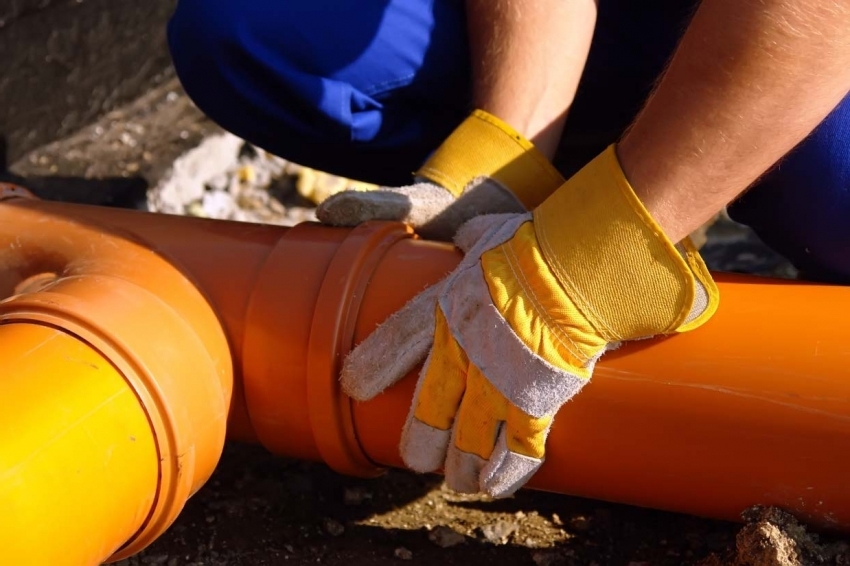
When installing a water supply system, you should purchase only high-quality pipes, which will extend the life of all equipment
- groundwater level;
- geological features of the territory;
- the need to use special equipment.
Average prices for organizing water supply to a cottage from a turnkey well:
| Service type | price, rub. |
| Sealing | 50 (lm) |
| Installation of the main | 150-180 (lm) |
| Setting the cold water point | from 1000 |
| Connecting filter systems | from 1100 |
| Installation of a hydroaccumulator tank | from 3500 |
| Manifold assembly | from 6200 |
How to organize a water supply system from a well to a house with your own hands
The construction of a communication system at the summer cottage is carried out in stages. A step-by-step technology for arranging a water supply system is as follows:
- search for water on the site;
- development of a scheme for placing the highway;
- formation of trenches for the installation of caissons and pipes;
- selection of equipment and its installation;
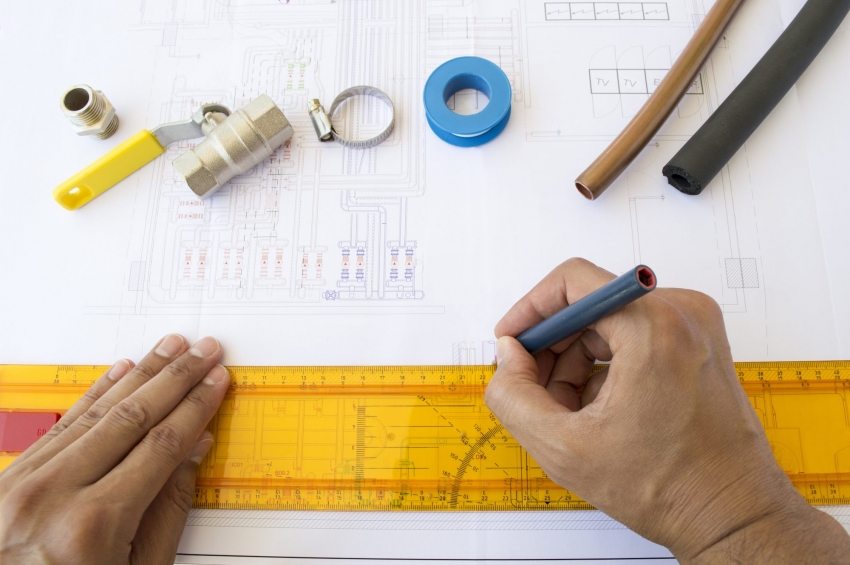
Careful calculations will allow you to rationalize the necessary materials for the installation of a water supply system and also avoid mistakes during work
- organization of the treatment system;
- laying the highway from the house to the well;
- installation of washing machines, dishwashers, water heating and other equipment provided by the system.
Note! When there is a flow of water in the kitchen or bathroom, the pressure in the system gradually decreases. When the indicator reaches 2.2 bar, the relay is activated, starting the pumping station. The device starts pumping liquid into the accumulator until the pressure level rises to 3 bar. Having fixed this indicator, the relay turns off the equipment.
How to bring water into the house: choosing the best place for a well
The construction of the system begins with the arrangement of a water source - a well. There are several ways to determine the optimal location:
- find out from the neighbors the features of the area and find a convenient site;
- hire specialists to conduct geological research;
- observe the dew on the site (where the water lies at the very surface, dew will accumulate in large quantities);
- use a biolocation technique involving the use of electrodes and wires.
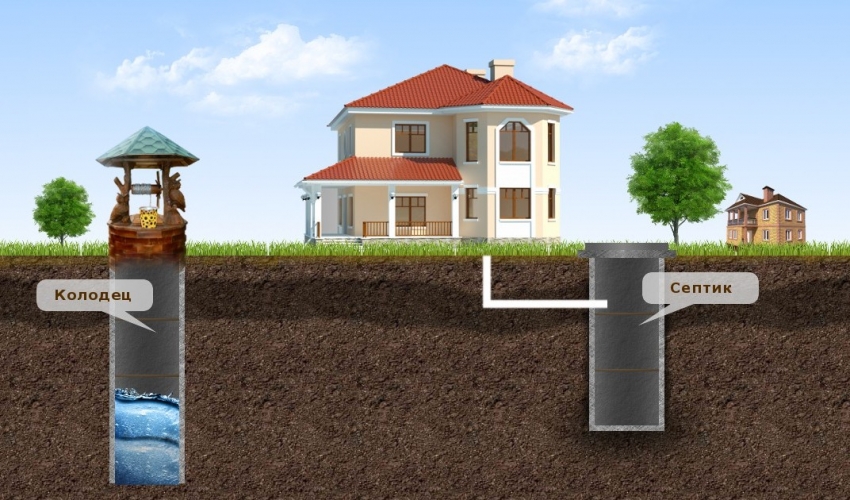
An important aspect when placing a well is the sufficient remoteness of the water source from the septic tank
To determine the place for the well using the dowsing or dowsing technique, you will need to bend the electrodes with the letter "G" and form a frame from the metal wire. The short ends of this structure must be held so that the long ones rotate freely.
Moving around the site with this frame, you can easily determine the optimal area for construction. Where there is an underground source, the long ends will cross. The intersection between the long ends indicates that the water source is located close to the surface or that the underground flow is very strong.
Useful advice! Initial work on the arrangement of communications is recommended to be performed in the hot season.Temperatures are high between June and September, so the height of groundwater is not increased by precipitation. At this time, you can get real geodetic data.
It is not recommended to equip the water source closer than 5 m from the building. This can lead to undermining and damage to the foundation of the building. Communication elements such as a cesspool, drains and a toilet should be located at a distance of 50 m from the well. Otherwise, the waste liquid will contaminate the water.
The initial stage of organizing water supply to a private house from a well with your own hands
Before starting work, you should develop a circuit. The presence of a finished project allows you to effectively solve many problems:
- optimize work by clearly planning the sequence of actions;
- accurately determine the time required for construction;
- correctly calculate the amount of materials;
- make a cost estimate;
- to achieve ideal performance and quality results.
The water supply project from the well must include all the necessary elements with an indication of their location and other technical data. In addition to the main components (well, pump, bottom filter, relay and accumulator), there are other components in the system.
These include:
- tees for distributing the line at different points;
- pipes in order to conduct water into the house;
- heating equipment (boiler);
- elements of the sewerage system;
- plumbing fixtures;
- check valves, valves and fittings.
Test drilling will help to make sure the aquifer is in the correct location. It is necessary to deepen into the soil in layers of 5-10 cm. The aquifer can be of a small thickness, with the help of this approach the probability of missing it is excluded. As you move deeper into the soil, water quality and purity will improve. When a stream is found, the well is left for 24 hours. During this time it will be filled with water. After a day, it will be possible to determine the water level. The optimal indicator is 1-1.5 m.
Further, the interior decoration of the well shaft is carried out. This procedure will prevent water from entering the well, as well as protect the structure from destruction. For these purposes, wood can be used in the form of beams of oak, pine or larch. Section size - 12 cm. This type of finish is short-lived and is only suitable for shallow wells (up to 3-4 m). For the decoration of the walls of the mine, rubble stone or brick can also be used. Although the use of these materials significantly increases the duration and complexity of construction work.
It is best to use reinforced concrete rings to supply water to the house from a well. The recommended diameter of the elements is 90-120 cm, the optimal height is 1 m. As a result, the work is simplified and the reliability of the mine is increased. In this case, the well can be up to 20 m deep.
Useful advice! If the water level drops, you can easily increase the depth of the well by installing repair rings.
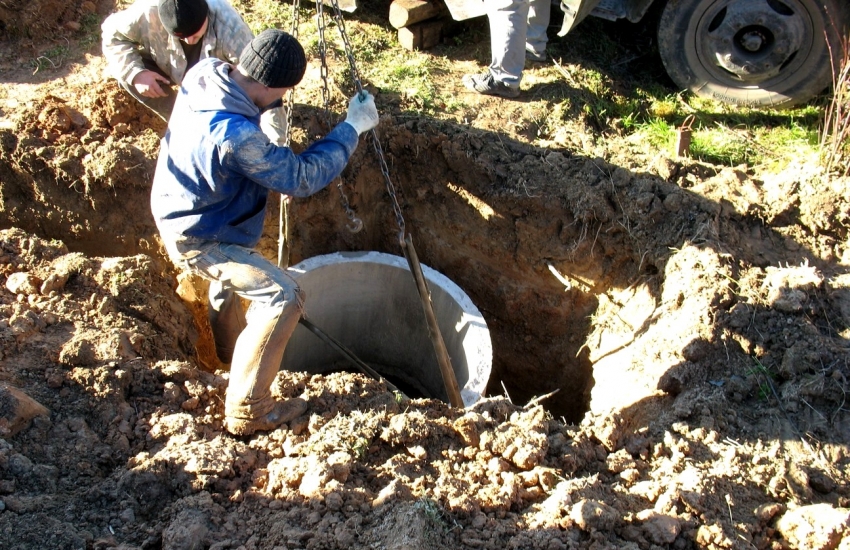
In order to lower the reinforced concrete rings into the well, it is worth using cables and special fasteners that are provided by the manufacturer
Features of the well installation system on the site
To determine the size of the shaft circumference, you need to the diameter concrete ring add twice the thickness of its walls and add an additional 20 cm for the backfill. When the depth of the shaft is equal to the height of one ring, the first concrete element is lowered to its bottom. This procedure requires care. First, the ring is laid on one side, and then turned over and placed in the recess.
After that, the excavation continues, and the installation of the second ring is carried out. As a rule, a hole is formed in this element for attaching an intake pipe, which will ensure the transportation of water to the house from the well. Although this element of the system can be installed in any of the rings, which are fixed to each other using two or more brackets. In this case, the size of the hole should be 1.5 times the pipe diameter.
During operation, water will flow into the rings. It should be removed by pumping. If the liquid fills 1-1.5 rings, it means that the installation work is being done correctly and the water level is sufficient.
Adhering to the basic rules for installing rings for water supply in the country from a well, you can achieve a high-quality result. It is very important to choose a secure mounting method. The ideal option would be to fix the elements using a groove system. It is also recommended to use additional mountings. The presence of staples will eliminate the possibility of displacement of the rings in relation to each other in the horizontal direction.
It is worth considering that laying the sealant between the concrete elements is required. As a result, the likelihood of penetration into the well is reduced.
The sealing material can be:
- hemp;
- rope;
- linen rope;
- special gaskets.
The joints between the rings should be treated with a fast-setting cement mixture. The area where the last two elements of the shaft are attached to each other must be additionally isolated. This procedure is performed from the outside. The insulation will close the access of melt water to the well and protect the rings from the external environment.
Important! Do not use bitumen or liquid glue to seal the joints between the rings. These materials will not provide the desired effect, but they will spoil the water.
The space on the outside of the rings should be filled with fine gravel or sand. These voids are designed to compensate for the shortcomings that arise during excavation work, but they are not needed to supply water to the house from the well. This layer will be a kind of drainage system to remove excess fluid. In addition, a layer of gravel will reduce the negative impact on the walls of the mine caused by frost heaving of soils.
Then the bottom of the structure is filled with small stones and covered with a layer of rubble. This forms a bottom filter, the thickness of which is 30-50 cm. geotextile as a lining for stones. If there is clayey quicksand or clay soil on the site, it is not necessary to equip the bottom filter. Departure from the rules is allowed if the work is carried out on a false quicksand, consisting of sand and clay.
Installation of equipment for water supply to a summer cottage from a well
To enter water into the house from a well, pumping equipment is used, which can be both submersible and surface. Submersible versions of devices can be immersed in liquid in whole or in part. They are efficient and quiet due to the natural water pressure. Thin air does not take part in this process. Submersible devices do not need conservation during cold weather. The liquid flows down the pipe on its own, this does not require pumping. Surface equipment is designed for wells with a depth of no more than 10 m.
The power and performance of equipment for entering water into the house is selected taking into account the following parameters:
- shaft dimensions (width and depth of the well);
- water quality;
- frequency of operation (seasonal or permanent);
- height of the water column;
- dynamic fluid level;
- static water level.
The pumping equipment is installed where the temperature does not drop below + 2 ° C and there are no sharp climatic changes.
Laying a line for organizing water supply in a country house from a well
The liquid is supplied to the residential building from the well through the outlet pipe. The hole through which it connects to the concrete ring must be well sealed. It is unacceptable that the top water contaminates the liquid in the well. When the construction of the structure is completed, an underground highway is laid to the house. For this, a trench is dug according to the drawn up scheme. It should be located at the floor at an angle to the building so that the water flows freely through the pipes. The minimum plumbing diameter is 3.2 cm.
Useful advice! If the house has already been put into operation, the pipe can be brought into the building by a surface method. Otherwise, it is better to lay the line through the foundation. The pipe should be protected from the influence of low temperatures and mechanical stress.
The depth of the water supply depends on two parameters. First, you need to decide on the period of operation: seasonal or year-round. If in the cold season people do not live in the house, the highway can be placed at a depth of 1 m. Secondly, it is important to take into account the level of winter soil freezing. Pipes should be located below this indicator.
For the construction of a water supply system for a private house, pipes made of various materials are used:
- polypropylene;
- metal-plastic;
- steel;
- plastic.
Pipe diameter depending on the length of the line:
| Line length | Optimal section size, mm |
| <10 | 20 |
| 10-30 | 25 |
| >30 | 32 |
When choosing pipes for laying a water main, you need to consider the following points:
- the complexity of the installation system;
- service life;
- product weight;
- the possibility of using a welding machine to fix parts;
- the degree of reliability;
- cost;
- resistance to corrosion and aggressive media.
The wiring diagram can be collector. It is also allowed to lay the system by connecting consumers in series. To supply cold liquid, it is better to take products with a wall thickness of 2.8 mm; a pipe with 3.2 mm reinforcement is suitable for hot water.
The choice of a scheme for arranging a water main in the country, as well as the process of its construction itself, is not difficult. After the installation of the pump, electrical cable and drainage channel has been completed, all that remains is to fill up the trench. This should be done gradually, tamping each layer so that the soil in the trench does not sink over time. If all technology requirements are met exactly, a high-quality construction result will be provided.
